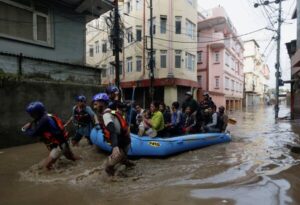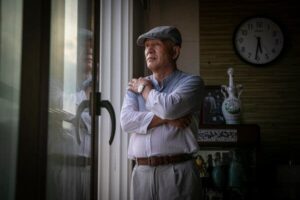The mountainous country is experiencing more extreme weather driven by climate change, including melting glaciers that add to the frequency and severity of flooding.

At least 170 people have died in Nepal after days of unceasing rain caused heavy flooding and triggered major landslides around the country, including in the densely populated region around Kathmandu, the capital.
The monsoon rains destroyed hundreds of homes and swept away bridges, cut off power and left downed trees as rescuers struggled to reach people, some of whom were trapped under debris while others were stranded on rooftops.
By late Saturday, the rains had lessened in intensity, allowing rescue workers to use helicopters and expand their search to more remote areas in the Dhading and Dolakha districts. More than 3,600 people have been rescued so far, but with more than 100 injured and dozens still missing, government officials said they expected the death toll to rise.
Nepal’s prime minister, K.P. Sharma Oli, who was in the United States attending the U.N. General Assembly meeting, urged Nepalis to have patience, saying on social media that the rains would subside soon.
“I'm preparing to return,” Mr. Oli said. “Let’s collaborate for rescue in the time of disaster.”
Nepal, the home of Mount Everest, is prone to landslides and floods because of its mountainous terrain and heavy monsoons. But the warming climate has made weather events more dangerous and deadly, causing frequent flooding from melting glaciers. Climate change has also intensified rainfall. At the same time, rapid development and haphazard construction have added to the risk that lives will be lost in natural disasters.
On Saturday afternoon, Satrudhan Kumar Mahato, a police inspector, reached a remote two-story house made of mud and stone whose residents were trapped in the Dolakha district, about three hours from Kathmandu. When Mr. Mahato and his team finally reached the house, they found three members of one family dead and a young child crying next to his dead mother, Mr. Mahato said.
“He was lying under the bed and plywood,” Mr. Mahato said. “I carefully removed the plywood of the bed and recovered him.” The child was then rushed to a hospital.
On Sunday, Mr. Mahato and other police officers continued their search-and-rescue operations, unearthing bodies from damaged houses. More than 5,000 police personnel equipped with helicopters, rafts, ropes and vehicles had been deployed.
After retrieving 14 bodies from a small bus that was buried by a landslide late Saturday night in the Dhading district, police officers located another buried bus and a van on Sunday, said Shailendra Thapa, a deputy armed police force superintendent. They retrieved 17 more bodies on Sunday, Mr. Thapa said.
The economic toll on Nepal is likely to be severe. Roads linking Kathmandu to other cities have been damaged, curtailing the transport of essential goods, from food to petroleum.
As many as 16 hydropower projects have sustained damage, forcing the country to import power from India, according to Nepal’s national news agency. Some parts of the country remained dark, and the disrupted power supply also curtailed internet service in Kathmandu and other cities.
Anupreeta Das covers India and South Asia for The Times. She is based in New Delhi. More about Anupreeta Das
See more on: K P Sharma Oli


